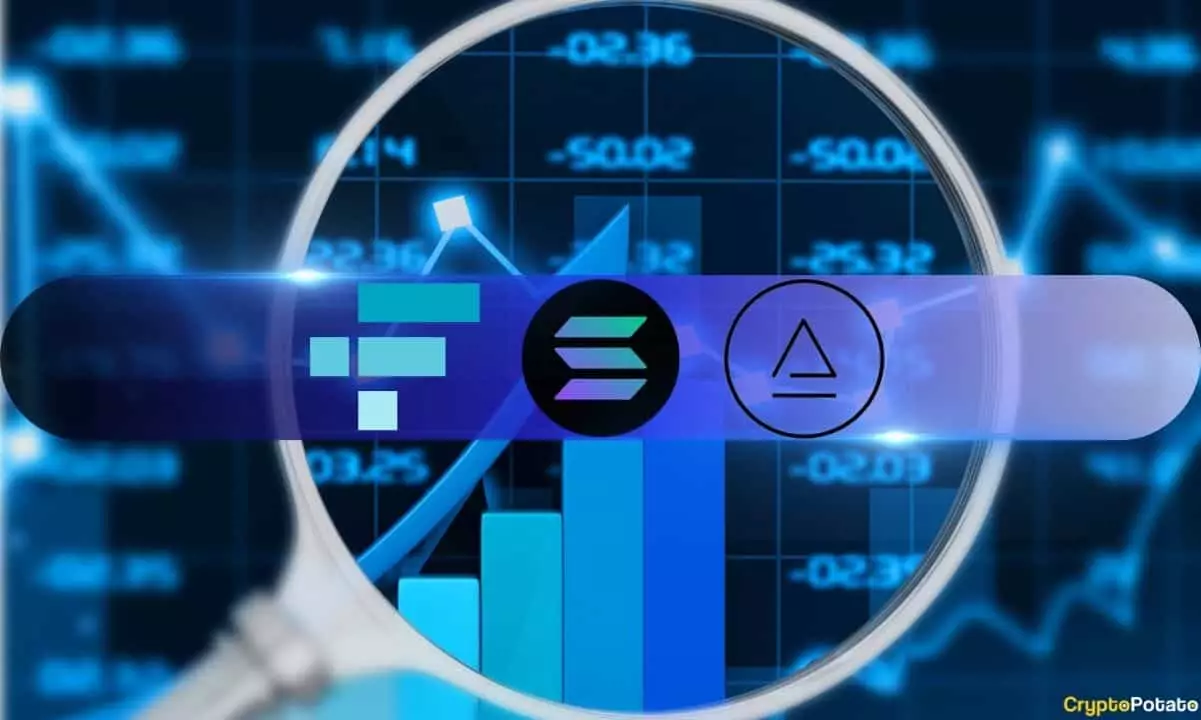Solana’s native token, SOL, has been making significant strides in the crypto market, surpassing major cryptocurrencies such as XRP and BNB in terms of market capitalization. However, recent data raises concerns about SOL’s future due to the sizable holdings of FTX and Alameda. This article delves into the potential implications of their holdings and examines the growth and recent achievements of the Solana network.
In recent weeks, SOL has experienced a remarkable surge of nearly 23%. This rise can be attributed to various factors, including the excitement surrounding airdrops. Solana’s Saga phone, coupled with the allure of airdrops, led to its complete sell-out and the subsequent trading of the device at a premium on secondary markets. This surge in popularity did wonders for SOL’s ranking, propelling it to become the fifth-largest crypto asset.
FTX and Alameda’s Dominance in SOL Holdings
Recent data indicates that FTX and Alameda hold the largest amount of SOL tokens, outpacing even Bitcoin and Ether. While this may seem positive initially, it can also be cause for concern. The Solana network previously suffered from the fallout of Sam Bankman-Fried’s empire, nearly losing its entire value. Now, only 27% of FTX’s total Solana holdings, which amount to 15.3 million SOL, have been unlocked. Speculation suggests that a significant portion of these tokens, specifically 13.22 million SOL (worth $666 million), may have been sold.
Analysts have examined the movement of SOL tokens associated with FTX and Alameda. Between October 24 and November 14, 2023, it is alleged that 6.99 million SOL (worth $280 million) from two public SOL addresses were transferred to exchanges. Another address linked to FTX, identified as “4Axqyo,” unstaked and transferred 6.23 million SOL (valued at approximately $386 million) to the wallet “3vxheE” (presumably Coinbase) within the last month. This suggests that approximately 2.08 million SOL ($206 million) may still be available for immediate trading.
The remaining 73% of FTX’s total SOL holdings, equating to 40.5 million tokens, are still under lockup. These tokens, currently valued at $3.99 billion, will be released according to a vesting schedule. Approximately 609,000 SOL ($60 million) will be unlocked each month, constituting around 1% of FTX’s total SOL holdings. On March 1, 2025, an additional 7.5 million SOL will be unlocked, representing 13.5% of FTX’s total stash. Furthermore, on May 17, 2025, an extra 61,800 SOL will be released.
Given the staggering increase in SOL’s value since FTX’s bankruptcy last November (over 460%), it is plausible that FTX debtors could stand to gain $3 billion or more from their SOL holdings. However, considering the vesting schedule, it is unlikely that any significant impact on the market will result from FTX and Alameda’s potential sell-off in the near future.
Despite the concerns surrounding FTX and Alameda’s holdings, Solana has demonstrated impressive growth and remarkable achievements. The total value locked (TVL) in the Solana network has soared by over 516% since the beginning of the year, reaching $1.295 billion as of December 22. Additionally, decentralized exchanges (DEXs) operating on Solana have surpassed Ethereum in terms of transaction volume. In the past week alone, DEX volume on Solana reached $10.12 billion, surpassing Ethereum’s decentralized exchanges, which recorded $8.82 billion worth of transactions during the same period.
One of the key drivers behind Solana’s surge in DEX activity is its lower gas fees compared to Ethereum. This cost advantage has attracted traders and users to Solana-based DEXs, leading to the network’s dominance in trading volume. Additionally, the meme coin BONK, built on the Solana network, obtained significant traction within the crypto community, maintaining a billion-dollar market capitalization for an extended period.
Solana’s rise in the crypto market is undeniable, with SOL surpassing major cryptocurrencies and the network achieving remarkable growth. However, concerns arise regarding FTX and Alameda’s sizable SOL holdings and the potential impact of their potential sell-off. Despite these concerns, Solana’s achievements, particularly in terms of transaction volume and the lower gas fees of its decentralized exchanges, suggest that the network is well-positioned for continued success in the future.

